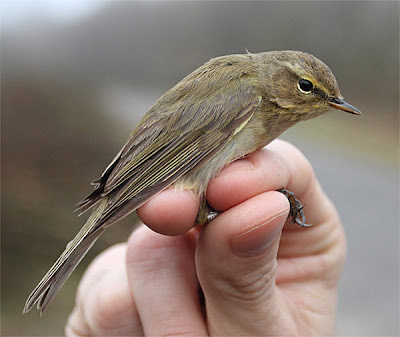Today I had the chance to go to St Aldhelms (or St Alban's, to some) Head in Dorset, with the aim of observing some visible migration or vis-mig to hard core birder's. The weather conditions were not ideal, with a stiff north-easterly breeze blowing, but today was the day I had planned to go so I stuck to the plan.
I arrived at the car park at Worth Matravers at around 05:50, and walked the track to the headland. It was freezing, but my mind was diverted away from the cold by the bird song. Whitethroats were common, but so were corn buntings and yellowhammers; the latter two are species that used to be common in Southern Hampshire, but are becoming more uncommon these days.
I settled under a sheltered cliff and scanned the sea; not much happening other than the odd northern gannet and herring gulls passing. As I continued to scan a steady stream of guillemots headed west and northern fulmers drifted back and forth. Visible migration was slow, barn swallows and house martins being the most numerous, along with occasional sand martins and a single yellow wagtail.
But as I continued to scan, my attention was caught by a large dark shape rolling forward in the water, then another and another. Bottle-nosed dolphins - in all, at least 12 individuals were present, but there may well have been more as the group was quite widely spread, and they were never all in view at the same time. The bottle-nosed dolphin is a large and robust dolphin which is uniformly grey above with paler flanks. However, when backlit by the sun they can appear extremely dark.
 |
| Bottle-nosed Dolphin, St Aldhelms Head - April 2011 |
The dorsal fin is located centrally on its back, and is tall and falcate, but the most distinctive feature has to be the obviously bottle shaped nose.
 |
| Bottle-nosed Dolphin, St Aldhelms Head - April 2011 |
I was torn between trying to get some good photos or try to get an accurate count of the number of individuals, in the end I tried both. And I was glad I did, because as I continued to watch the group swimming east, I noticed at least three young calves.
 |
| Two Adult Bottle-nosed Dolphins and Calf (centre front), St Aldhelm's Head - April 2011 |
At the end of the day I headed home content with my sightings, despite the lack of migrant birds; whales and dolphins are fascinating animals and I never tire of seeing them.






















